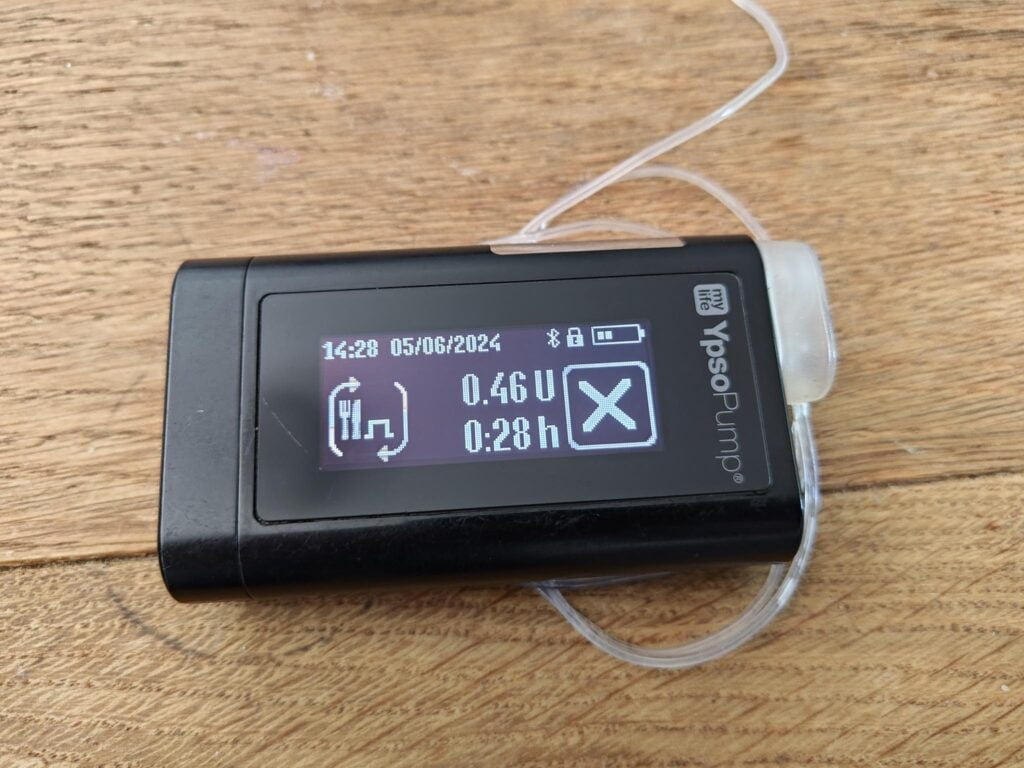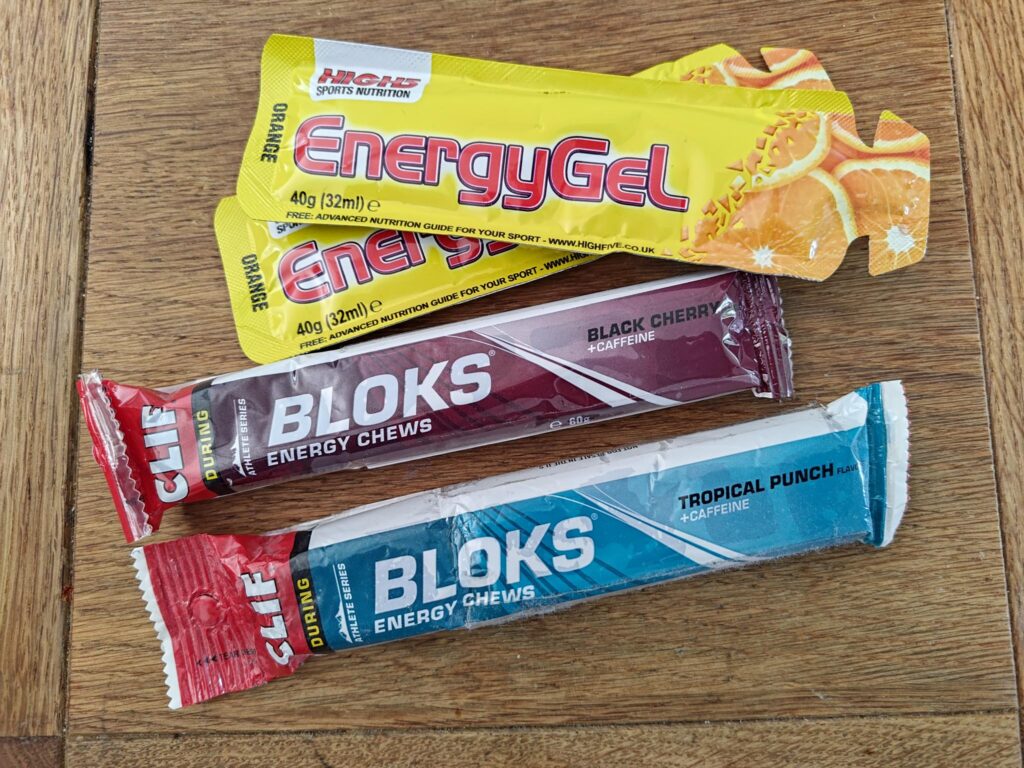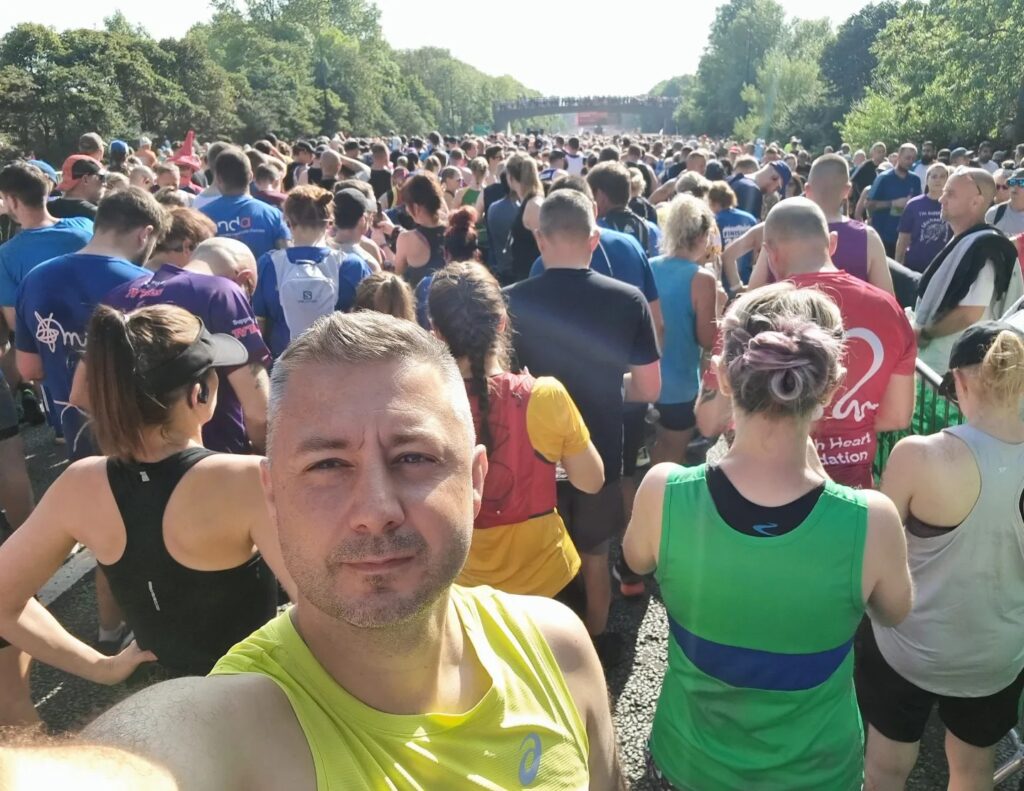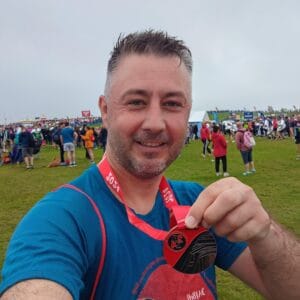As someone that has completed ultra-marathons up to 50 miles across the Lake District and been on their feet for over 21 hours of continuous exercise you might think training for a half marathon would be pretty straight forward. Well, I’m a bit older, a bit heavier (almost 2 stone heavier) and a bit busier with family, work and volunteering as a children’s sports coach. All this adds up to the upcoming Great North Run being maybe not a new challenge but a different one from my previous efforts.
Training for a half marathon is challenging for anyone but as someone with Type 1 diabetes, it comes with its own unique set of hurdles. When I decided to sign up for this year’s Great North Run I knew it wouldn’t be easy, however, as always I’m determined to continue to prove to myself that my diabetes won’t hold me back. Particularly with the help of my Ypsopump and the CamAPS FX hybrid closed-loop system at least some of the Type 1 diabetes related decisions are supported by current technology.
The Journey So Far
The first step for me is understanding how my Type 1 diabetes interacts with intense physical activity, mainly aerobic exercise in this case. From previous experience endurance running can significantly impact my blood glucose levels, causing them to drop rapidly during and sometimes spike after exercise. Over the past decade I’ve moved from running marathons on MDI using insulin pen injections through to traditional insulin pump therapy and then onto the DIY closed-loop option of Android APS. All of these diabetes management options have stood me in good stead, albeit very different from each other and each requiring a bit of effort and learning to fine tune those blood glucose levels during exercise.
The Equipment and Technology
In simple terms the Ypsopump is a compact, easy-to-use insulin pump and when paired with the CamAPS FX app, it becomes a hybrid closed-loop system. This means it can automatically adjust my insulin delivery based on my glucose readings from my Dexcom G6 continuous glucose monitor (CGM). I first got my hands on the Ypsopump a few years ago when it wasn’t yet a closed-loop option. On first impressions I really liked it, particularly the small size and incredible light weight of the pump. The deal breaker in choosing the pump back then was that it didn’t have the option of running a closed-loop system.
Moving across Hybrid Closed-Loop Systems
Fast forward a few years and now the Ypsopump combines with the CamAPS FX closed-loop system to create MyLife Loop which immediately turned my head and made it an option for me! Having used the Android APS closed-loop system for years I didn’t really expect the move to CamAPS FX to be too difficult. In truth, there are similarities across the systems, both continuously monitor glucose levels through a CGM then the data is transmitted to the app which uses algorithms to predict glucose trends and automatically adjusts insulin delivery through the pump.
I would also say there are some key differences across the systems too. Android APS has much more user options built into the system and you can tinker with endless parts of the system to really dial in management of your blood glucose levels. There’s so much you can do, from setting automations like “on Sunday morning at 5am change my BG target to 7 mmol” (to prepare for my long run), through to telling the system to be more aggressive with insulin delivery at certain higher blood glucose levels (and countless more options in-between to tinker with). For anyone that wants an endless level of user options it really is an amazing system that has kept me time in range easily over 85%+ during the time that I used it. The fact that the system is developed by incredibly committed volunteers and the Type 1 DIY community is amazing!
In comparison I’ve found CamAPS FX to be much simpler to use as all it requires is your weight, current Total Daily Dose (TDD) of insulin and Insulin:Carb ratio. It then takes some time (around 3 weeks in my case) to learn insulin sensitivities and routines (amongst other things) to adjust and utilise the inbuilt algorithm effectively. In summary I’ve had similar HbA1C and Time in Range (85%+) with CamAPS FX as I did with Android APS but with much less tinkering with settings. This will obviously vary from person to person and what they want from a closed-loop system but for me simplicity has won me over.
Training Routine
I’ve started with a semi-structured training plan that includes a mix of short and long runs plus strength training in the form of a free-weight squat-based programme.
To prepare for my runs:
- Pre-Run Preparation: Before heading out for a run, I always check where my blood glucose levels are. The CamAPS FX app usually ensures they are pretty stable so I’ll set the “ease off” mode to “On” around 1 – 2 hours prior to my run along with setting a Personal Glucose Target between 7 – 9mmol to ensure I’ve got as little Insulin on Board (IOB) as I can, this tends to prevent my blood sugars from plummeting during the early stages of my run. If my levels are on the lower side pre-run I’ll have a small snack like a banana or scoff a handful of jelly babies to avoid any early-run hypos.
- During the Run: I carry my Android phone with the CamAPS FX app in my running shorts rear zip-pocket and clip my Ypsopump to my running shorts. The hybrid closed-loop system allows me to focus more on my run and less on my blood sugar, adjusting my insulin delivery on my behalf in real-time. I try to eat around 40g carb per hour of running in the form of energy gels, jelly babies or Clif Shot Bloks and this tends to keep my blood glucose in range and avoid hypo.
- Post-Run Recovery: After each run I’ll check my levels again as sometimes they can spike due to adrenaline, glycogen dump or missed basal insulin but at other times they can drop, so very much trial and error for me. A huge advantage of the closed-loop system is that the Ypsopump and CamAPS FX make post-run insulin adjustments that get me back in range much quicker than I’ve previously experienced without closed-loop.
What’s Next?
Well, a lot more of the above really! I’ll keep you posted with my progress. I’m hoping to lose a bit of excess weight and get a bit leaner on my journey to the Great North Run this year. I’ve not yet set a finishing time goal and will probably look to enjoy the run rather than race for a target time but let’s see what shape I’m in come September, eek!










Hi Craig, both my T1D daughter Hannah and me will be joining you on the start line in Newcastle this September- let’s catch up then!